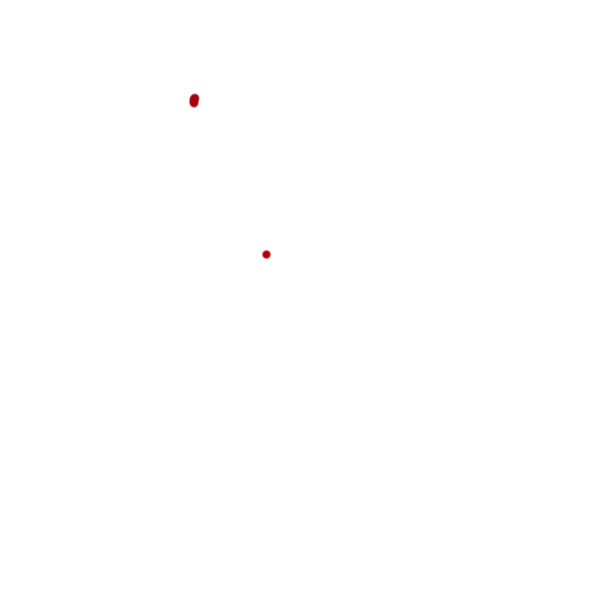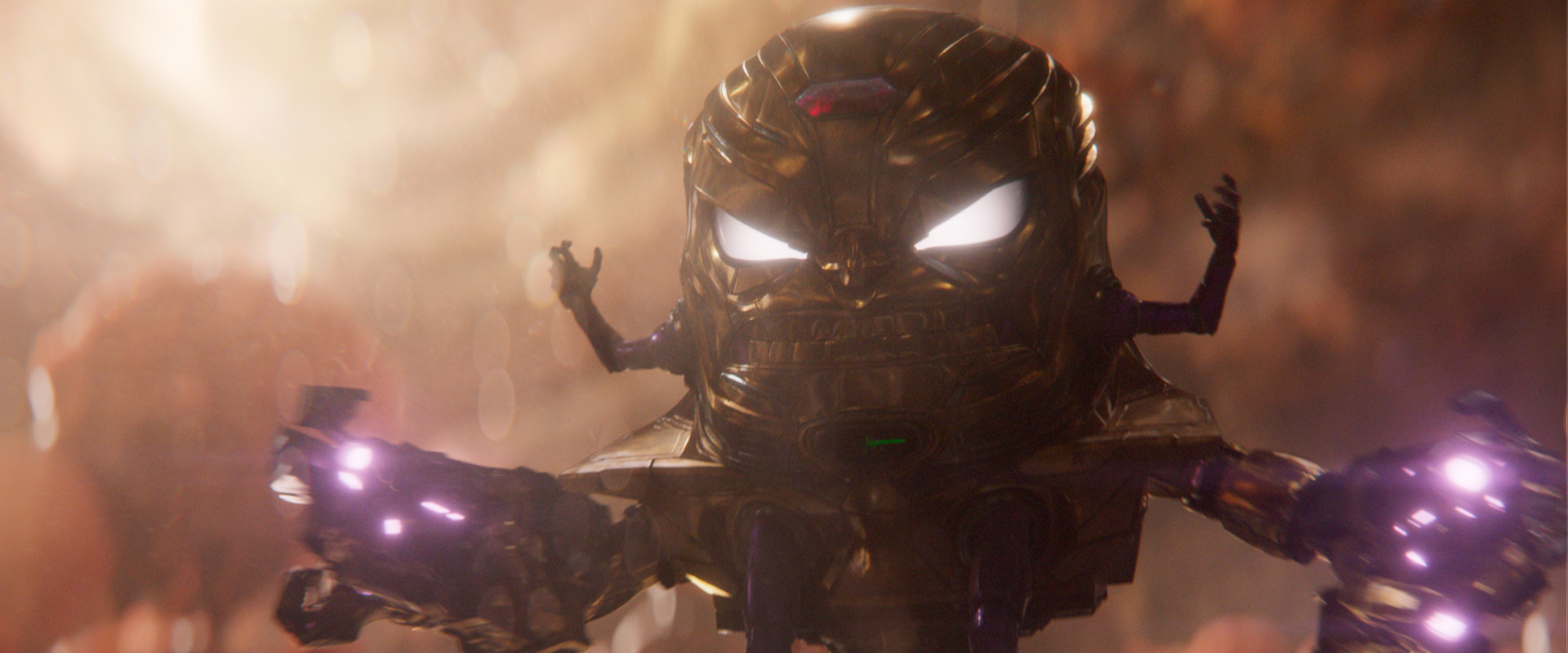Comment Digital Domain s’est lancé à fond dans la création de M.O.D.O.K. pour « Ant-Man et la Guêpe : Quantumania »
Mars 3, 2023Le système de capture faciale propriétaire Masquerade 2.0 et les réseaux neuronaux aident le studio d’effets visuels primé à créer un méchant qui ne sera pas oublié de sitôt
LOS ANGELES — 3 mars 2023 — Au cours de 31 films, sept séries épisodiques en direct et une poignée de projets animés et autonomes, le Marvel Cinematic Universe a présenté certains des méchants les plus intéressants - et les plus bizarres - jamais vus à l’écran. Avec l’arrivée d’Ant-Man et la Guêpe : Quantumania de Marvel Studios et l’introduction de sa très attendue Phase Cinq, le MCU dévoile sans doute son méchant le plus inhabituel à ce jour avec M.O.D.O.K., un visage volant de cinq pieds de haut, animé par le studio d’effets visuels primé Digital Domain. « Au cours de ses 30 ans d’histoire, Digital Domain a créé certains des personnages CG les plus emblématiques jamais vus au cinéma, notamment Thanos, Benjamin Button, le casting de Ready Player One et bien d’autres, mais c’est vraiment une première », a déclaré Dave Hodgins, superviseur des effets visuels de Digital Domain. « Une partie du plaisir de travailler avec Marvel Studios est qu’ils continuent à proposer des personnages et des environnements parmi les plus imaginatifs, ce qui nous permet de créer quelque chose dont les fans se souviendront. » Le personnage de M.O.D.O.K. – un acronyme pour « Mechanized Organism Designed Only for Killing » – est un incontournable de Marvel Comics depuis ses débuts il y a plus de 50 ans. Créé à l’origine dans un laboratoire par des scientifiques contemporains, M.O.D.O.K. a été réimaginé pour le MCU et poursuit l’histoire du méchant Darren Cross (Corey Stoll) de Ant-Man de 2015. Le film explore ce qui s’est passé après qu’il soit entré dans le mystérieux royaume quantique et qu’il soit rené sous une nouvelle forme monstrueuse, ce qui a conduit l’équipe du domaine numérique à créer une version entièrement CG du personnage, grâce à la performance de l’acteur. Digital Domain a commencé par capturer des images de Stoll et tester différents looks, en commençant par différentes proportions. Plusieurs itérations ont été envisagées alors que l’équipe cherchait un équilibre entre une créature bizarre et un humanoïde photoréaliste. L’équipe a même testé une version qui incluait la coupe de cheveux au bol fidèle à la bande dessinée du personnage, ainsi que d’autres styles. En fin de compte, Digital Domain et Marvel Studios ont décidé d’une version du personnage qui ressemblait au visage et à la coiffure de Stoll, mais à 5,72 fois la taille réelle, mesurant 173 centimètres de la tête aux pieds et 124,77 centimètres de l’avant à l’arrière. Pour diriger la performance, Stoll est apparu dans un volume de capture portant une HMC (caméra montée sur la tête) et a joué ses scènes tout en regardant les images en direct du plateau (la production a utilisé une grande découpe grise imprimée en 3D de son visage comme doublure). La performance de Stoll a ensuite été traitée par le système de capture faciale Masquerade 2.0 de Digital Domain, qui utilise des réseaux neuronaux pour cartographier le visage de l’acteur et créer une animation photoréaliste fonctionnelle. Bien que Masquerade ait été en mesure de générer un modèle qui transmettait avec précision les performances de Stoll, l’équipe de Digital Domain devait encore ajouter quelques touches finales à la main, y compris, et peut-être le plus important, les yeux. L’équipe VFX a étudié l’œil humain afin de déterminer la meilleure façon de l’agrandir et de conserver un aspect réaliste. En utilisant Maya pour la conception et Mari pour la texture, les artistes ont construit les yeux du personnage à la main, jusqu’aux canaux lacrymaux et aux plis de l’œil. L’équipe a ensuite utilisé le shader de peau Random walk SSS de V-Ray 5, qui maintient les formes de base du visage et permet aux détails des pores fins d’être plus lisibles. À partir de là, l’équipe de Digital Domain a dû s’attaquer aux limitations de mouvement uniques du personnage.
Au cours de la performance de Stoll, l’acteur a fréquemment utilisé des manières complètes pour transmettre l’emphase.
Le personnage de M.O.D.O.K., cependant, est un visage maintenu en place par un châssis métallique qui contraint sa mâchoire et limite toute gesticulation.
À l’aide d’un déformateur personnalisé dans Maya, les animateurs ont supprimé tous les mouvements supplémentaires des images de Stoll tout en modifiant sa mâchoire pour refléter les contraintes du personnage.
Enfin, Digital Domain a développé un nouveau pipeline de flux sanguin qui exploite l’apprentissage automatique et crée une bibliothèque de données à partir des données numérisées de Stoll.
Une fois que l’équipe a commencé à travailler sur la version finale de M.O.D.O.K., la bibliothèque de données a été déclenchée par le système propriétaire WPSD (Weighted Pose Space Deformation) de Digital Domain, qui calcule les différences de déformation des bords pour piloter les cartes, de sorte qu’aucune intervention de l’animateur n’est nécessaire.
L’équipe a couronné le tout en ajoutant un moniteur de rythme cardiaque (qui change dans le film selon les besoins), un masque de combat en métal inspiré des racines de bande dessinée du personnage et une poignée d’armes futuristes créées pour répondre aux spécifications du film.
Le travail de Digital Domain sur Ant-Man et la Guêpe : Quantumania marque la dernière d’une série de collaborations entre le studio VFX et Marvel Studios qui remonte à plus d’une décennie.
Il comprend des superproductions telles que Black Panther : Wakanda Forever, Doctor Strange in the Multiverse of Madness et Spider-Man : No Way Home, ainsi que des épisodes récents tels que She-Hulk, Ms. Marvel et le prochain Secret Invasion.
Ant-Man et la Guêpe : Quantumania est à l’affiche en ce moment, exclusivement dans les cinémas.
À propos de Digital Domain
Digital Domain est le pionnier de la création d’expériences de transport.
Au cours des 30 dernières années, Digital Domain s’est développé pour devenir le leader de l’industrie des effets visuels, élargissant à l’échelle mondiale la branche des humains virtuels et de la visualisation.
Le riche héritage de Digital Domain se compose de centaines de longs métrages et d’épisodes, de milliers de publicités, de cinématiques de jeux et d’expériences immersives expérimentales.
Force créative dans le domaine des technologies de pointe, Digital Domain a apporté un talent artistique exceptionnel aux blockbusters oscarisés Titanic, What Dreams May Come et The Curious Case of Benjamin Button, aux titres du Marvel Cinematic Universe qui ont écrasé tous les temps au box-office mondial, comme la franchise Avengers, et Stranger Things a fait sensation avec la saison IV.
En tant que premier studio d’effets visuels indépendant à pénétrer avec succès la Grande Chine, Digital Domain a ouvert la voie à la course virtuelle depuis 2016.
En s’appuyant sur les technologies de l’intelligence artificielle et de la réalité virtuelle, Digital Domain peut créer des humains virtuels photoréalistes et émotionnellement expressifs, le tout en temps réel, et fournit un support avancé pour les interactions homme-machine et humain-humain dans divers scénarios virtuels.
Digital Domain Holdings Limited est cotée à la Bourse de Hong Kong (code boursier : 547).
Digital Domain compte dix sites, dont Los Angeles, Vancouver, Montréal, Pékin, Shanghai et Hyderabad.
Site officiel du domaine numérique - WWW.DIGITALDOMAIN.COM


